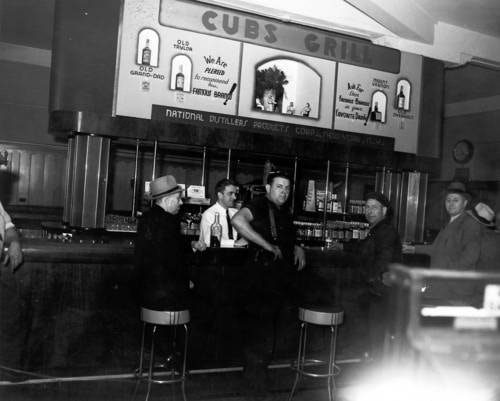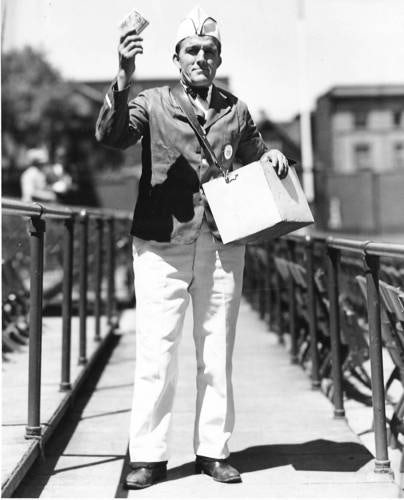Chicago’s Wrigley Field turned 100 years old in 2014. What makes it so special? Is it the history? Is it the hordes of drunken sorority girls at every game? Is it the legions of bare-belly bleacher bums that buy tickets no matter how bad the team is? Is it the Old Style beer? Yep.
But it’s also the stadium itself. Built in 1914, the park was home to the Chicago Federals, but the Cubs took over in 1916, when William Wrigley Jr. bought a minority stake in the team. The building was ahead of its time, as it was designed to be flexible, like a 1910s version of a 1960s vision of Cedric Price or Archigram. The structure’s signature green steel can be assembled and disassembled, allowing for modifications or additions.
Wrigley is one of two real, old school ballparks left, along with Fenway in Boston. It lacks much of the spectacle, such as food courts and night clubs, that many new parks have. The old ball parks were built for baseball only, making them smaller and more intimate than the larger multipurpose stadiums built in the last half-century. Wrigley has had updates, but each intervention has been minimal, such as adding seats rather than completely overhauling it.
This residue of history has formed it into what it is today. There have been some additions, such as outer concrete panels, which were removed as part of a 500 million dollar renovation in 2015. But what remains and will live on is the connection to the city that Wrigley has. It grew organically with the neighborhood and remains relatively small-scale for a major-market sports complex. The new renovation will also restore the hut-like ticket counters which originally connected Wrigley to the sidewalk in a personal, friendly way.
The renovation will let the ballpark stick around for another 50 or 75 years, but let’s not get ahead of ourselves. Here are some photographs that show the long history of Wrigley and why it remains a fascinating and magical place today.

Image of a print of an elevated view looking over the Chicago Cubs baseball stadium on West Addison. Via Library of Congress.

Image of crowds lining up along the sidewalk outside Federal Ballpark (later Wrigley Field). Via Chicago History Museum.

Crowds sitting and standing in grandstands along the third baseline and on the field in the outfield at Wrigley Field in Chicago during a 1929 World Series. Via Library of Congress.

A 1926 portrait of baseball player Barnhart following through with his baseball bat on Wrigley Field. In the background can be seen the mid-rise urban fabric of the neighborhood. Those buildings now have bootleg bleachers on top and are the center of a dispute between the owners of the buildings and Wrigley Field, as the renovation will disrupt their pro bono view. Via Library of Congress.

A Cubs player rounding first. Via Library of Congress.

A crowd of 43,332 occupied every seat and overflowed onto the outfield as the Cubs lost twice to the Pirates in 1936 at Wrigley Field. Balls bouncing into the outfield were ruled ground-rule doubles. The catwalk, located where sky boxes are today, was a hangout for VIPs and press photographers. Via chicagotribune.com

Image of crowds standing behind policemen at night outside Wrigley Field in Chicago, waiting to enter the ballpark for a 1929 World Series game between the National League’s Chicago Cubs and the American League’s Philadelphia Athletics. Via Library of Congress.

Wrigley Field patrons line up to buy tickets for the Cubs opener against the Pirates on April 18, 1949. Via www.chicagotribune.com.

The Cubs Grill at Wrigley Field served many varieties of whiskey. Via www.chicagotribune.com.

A candid shot of Wrigley Field concession employees working the hot dog wagon in the stands. Via www.chicagotribune.com.

A candid shot of a Wrigley Field concessions employee, with the city visible in the background. Via www.chicagotribune.com.

A 1953 Kodachrome of third base grandstands; the upper deck is not part of the original structure. Via www.grayflannelsuit.net.

A 1953 Kodachrome shows a hand-operated scoreboard. Via www.grayflannelsuit.net.

A 1953 Kodachrome shows the building’s exterior. Via www.grayflannelsuit.net.

The scoreboard in 2009, relatively unchanged. Via therichestimages.com.

The 500 million dollar renovation carried out in 2015. Via ESPN.com.

The 500 million dollar renovation carried out in 2015. Via ESPN.com.
For more on the renovation of the park, see ESPN.









